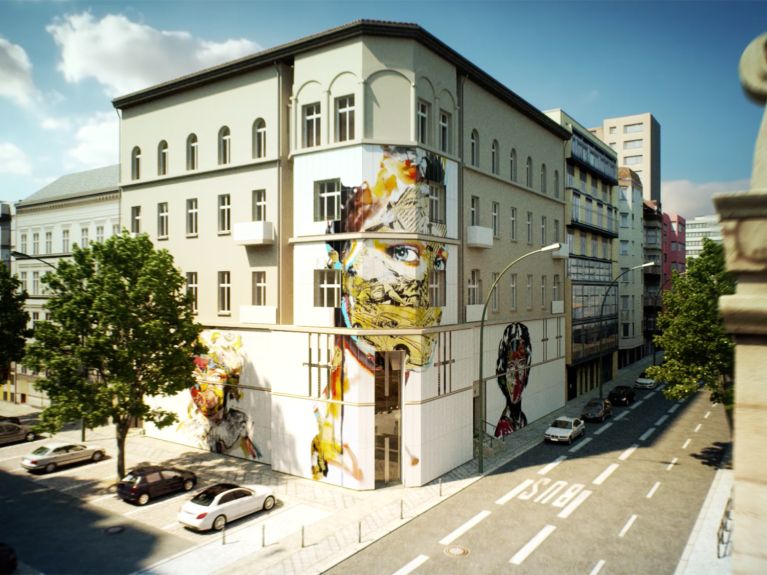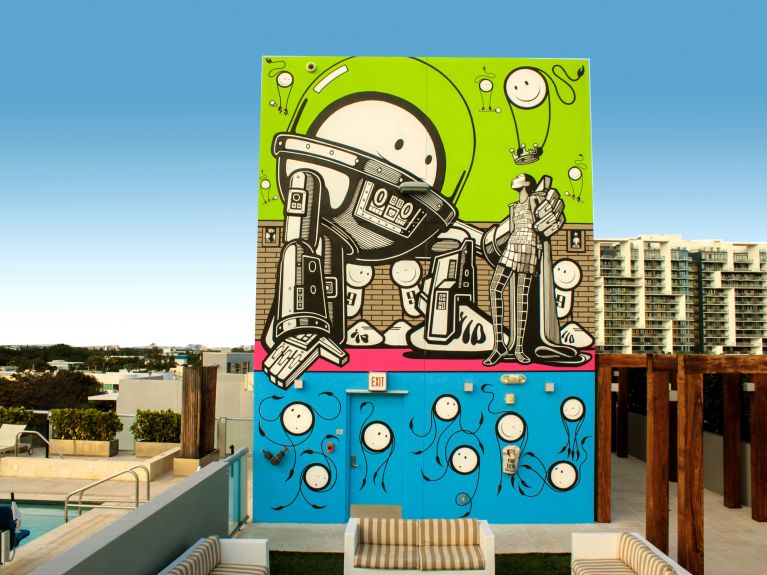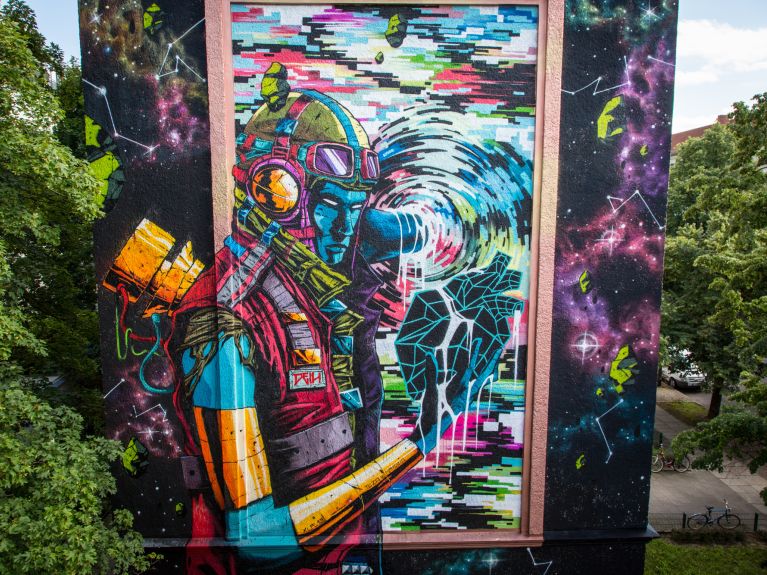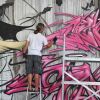“Berlin is a gallery”
How Yasha Young, Artistic Director of the new Museum for Urban Contemporary Art, is changing the streets of Berlin.

Ms. Young, the Urban Nation Museum for Urban Contemporary Art in Berlin opens on 16 September 2017. Does this mean “protest art” is now acceptable to the establishment?
What you refer to as “protest art” has been acceptable to galleries and museums for quite some time now. Urban Nation is not the first institution to showcase urban art in closed spaces. Nor are the artists themselves only interested in displaying their art in the public domain, and as such have been creating artworks for “inside” and exhibiting in galleries for years. With the Urban Nation Museum for Urban Contemporary Art we intend to cover the full range of a museum’s activities, i.e., collecting, safeguarding, research, and the realization of art in other districts. The Urban Nation Museum gives urban art a memory – and that is what we are about: the appreciation and archiving of what is still a very young form of art.
Since 2013 you have been inviting international artists to Berlin to decorate façades, the walls of buildings, and display windows. Is Berlin becoming a gallery? And what is on show on Berlin’s streets?
Indeed, Berlin is very definitely a gallery. Urban Nation has already implemented over 25 one-wall projects in collaboration with various artists, most recently, for example, with Ricky Lee Gordon at Landsberger Allee 121, with Nicholás Sanchez, aka Alfafa, at Mommsenstrasse 40, and with Deih XLF at Schwedter Strasse 34. The Urban Nation Museum’s façade is always being redecorated as well. As such, the art form that originated on the streets can still take place outside museums in the public domain, and is still vibrant. But apart from Urban Nation projects, there are lots of great works of art to be seen in the city.
In the international scene Berlin stands for innovation and creativity.
You have worked with numerous international artists. What is the attraction of Berlin? And how is Berlin positioned in the international urban art scene?
At the time the Wall came down, Berlin, with all its open spaces and empty buildings, was a magnet for international street artists and has now become one of the relevant places worldwide for an art scene that is at home outside galleries and museums, in the public domain. Urban art is part of urban culture and typical of the lifestyle that Berliners love and that attracts visitors. In the international scene Berlin stands for innovation, creativity, and ways of “living” as an artist. Given the large number of artists living and working here, there is a very active international community.
The artists are regarded as loners, which is also because in some cases they work illegally and anonymously. Urban Nation aims to bring the scene together and network it. How is that coming along?
I wouldn’t say the artists are regarded as loners. Like all artists in every field they have to network with the scene to represent their interests. There are enough artists’ collectives made up of several artists, for example the XLF Crew, duos such as Herakut, and the 1Up Crew, which has more than 30 members. As a curator, I myself have been involved with the scene for almost 20 years, so it goes without saying that I’m well networked with lots of artists.
Do you see the opening of the museum more as the conclusion of your work or a fresh start?
The opening is going to increase the potential for promoting urban contemporary art. Over the last four years a lot of incredibly hard preparations went into getting it off the ground. The museum can make a mark that is of relevance worldwide for urban contemporary art in Berlin, and that now needs to be moved forward.
What was your favourite project to date, and what would you still like to do?
I would like to develop new courses with universities, establish the in-residence programme from 2018, and expand the network. With my team I also intend to advance archiving of the history of urban art, and work with institutions such as the Humboldt Forum. My objectives are to combine traditional with new, to learn from and with one another, and to make museums as educational places accessible to everyone again.
What is important is the integration of people in their history and their participation, the understanding and promotion of young positions. With all activities it is important to think on a global basis, in a city that in the 21st century has an international lifestyle.
Interview: Martin Orth




